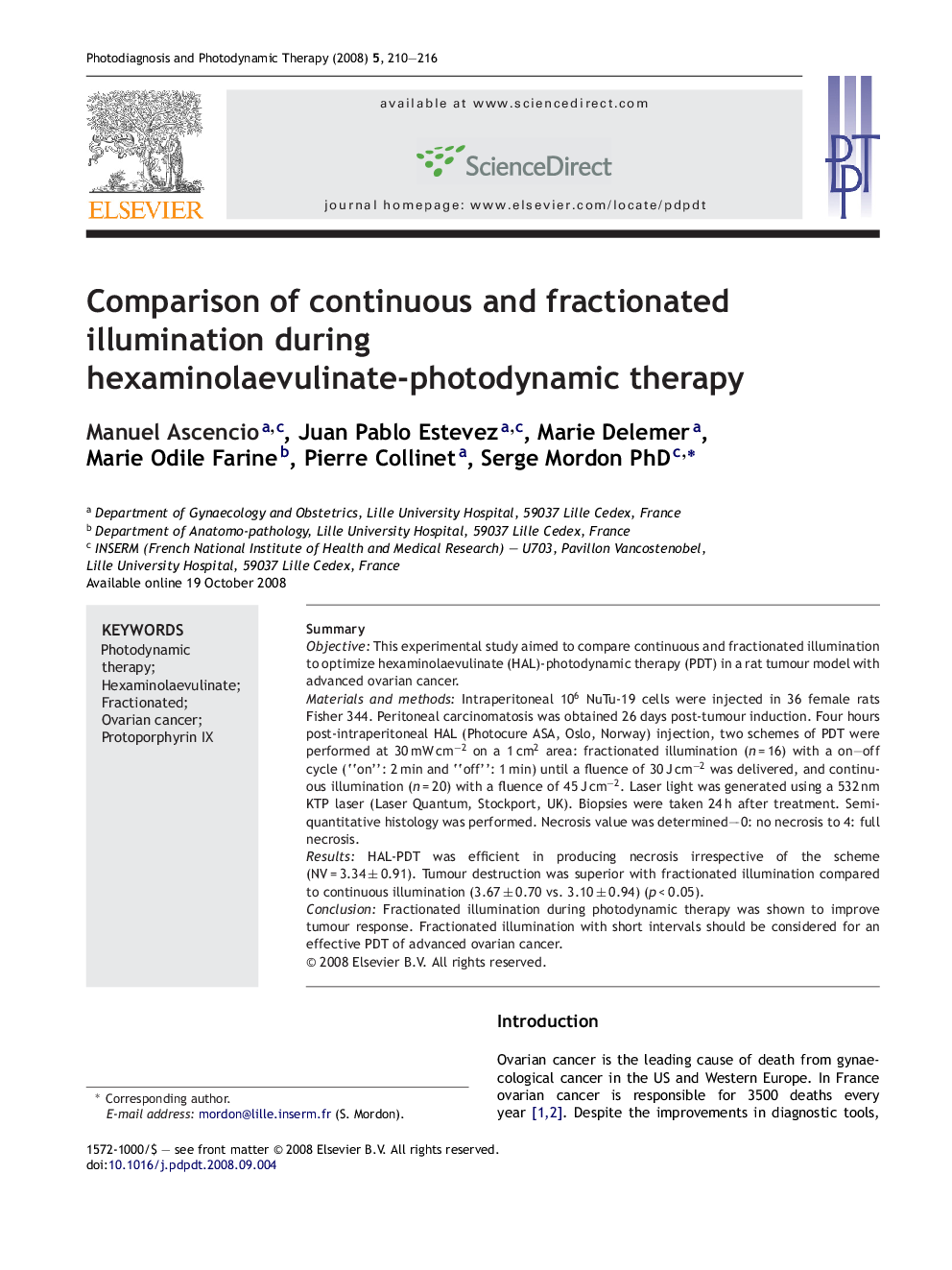| کد مقاله | کد نشریه | سال انتشار | مقاله انگلیسی | نسخه تمام متن |
|---|---|---|---|---|
| 3816773 | 1246266 | 2008 | 7 صفحه PDF | دانلود رایگان |

SummaryObjectiveThis experimental study aimed to compare continuous and fractionated illumination to optimize hexaminolaevulinate (HAL)-photodynamic therapy (PDT) in a rat tumour model with advanced ovarian cancer.Materials and methodsIntraperitoneal 106 NuTu-19 cells were injected in 36 female rats Fisher 344. Peritoneal carcinomatosis was obtained 26 days post-tumour induction. Four hours post-intraperitoneal HAL (Photocure ASA, Oslo, Norway) injection, two schemes of PDT were performed at 30 mW cm−2 on a 1 cm2 area: fractionated illumination (n = 16) with a on–off cycle (“on”: 2 min and “off”: 1 min) until a fluence of 30 J cm−2 was delivered, and continuous illumination (n = 20) with a fluence of 45 J cm−2. Laser light was generated using a 532 nm KTP laser (Laser Quantum, Stockport, UK). Biopsies were taken 24 h after treatment. Semi-quantitative histology was performed. Necrosis value was determined—0: no necrosis to 4: full necrosis.ResultsHAL-PDT was efficient in producing necrosis irrespective of the scheme (NV = 3.34 ± 0.91). Tumour destruction was superior with fractionated illumination compared to continuous illumination (3.67 ± 0.70 vs. 3.10 ± 0.94) (p < 0.05).ConclusionFractionated illumination during photodynamic therapy was shown to improve tumour response. Fractionated illumination with short intervals should be considered for an effective PDT of advanced ovarian cancer.
Journal: Photodiagnosis and Photodynamic Therapy - Volume 5, Issue 3, September 2008, Pages 210–216